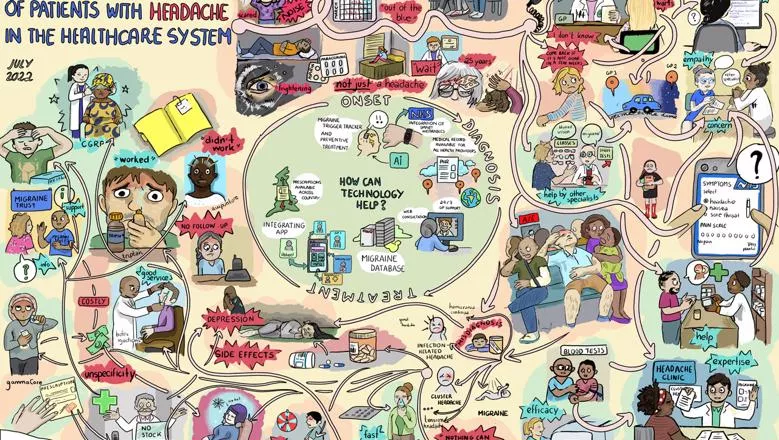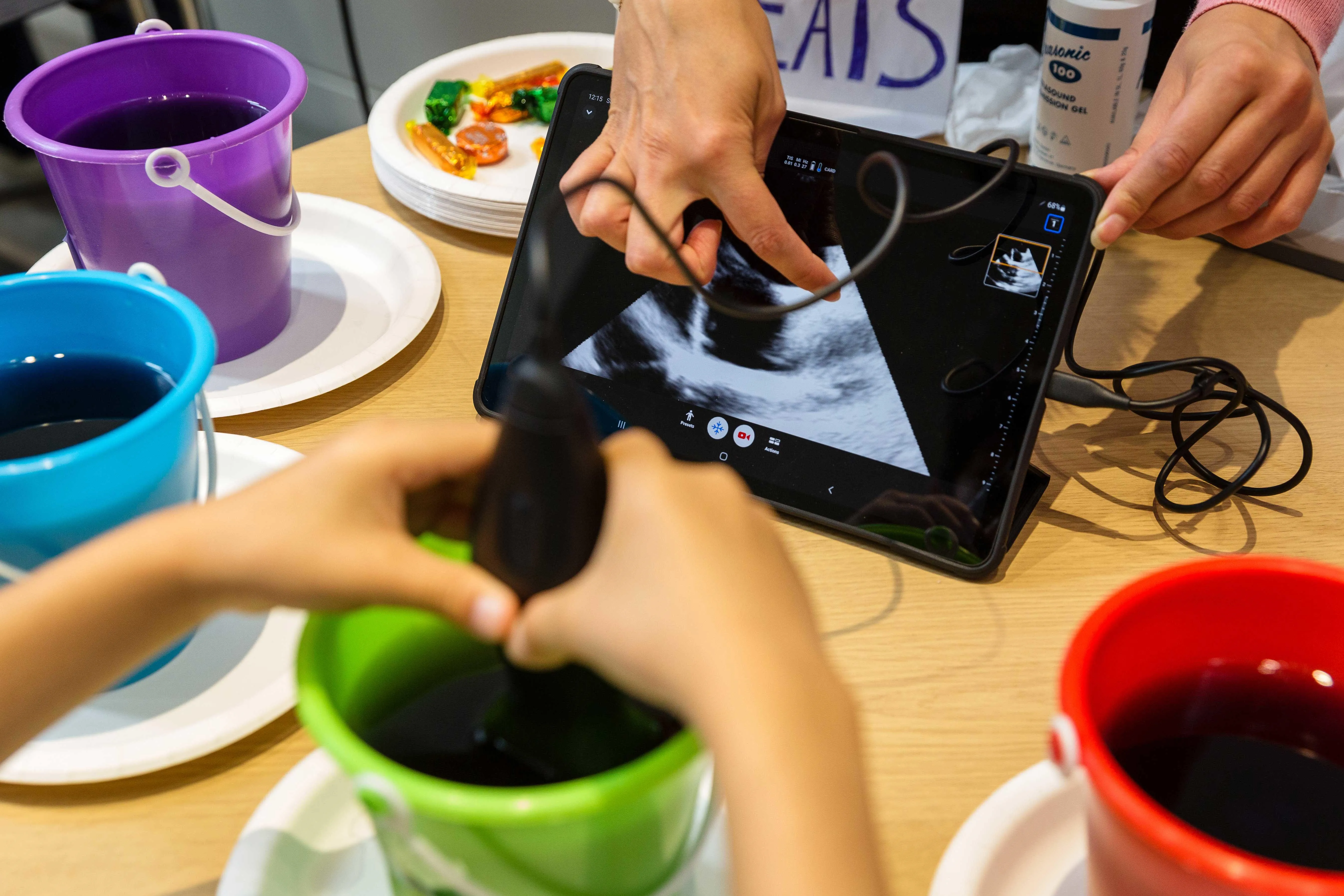As a clinician working in A&E, I saw first-hand the difficulties these patients faced in obtaining accurate diagnoses and relieving intervention. Many patients manage their symptoms for years, and as a result ‘bounce’ around the healthcare system. During consultations, they shared their frustrations in not getting access to the right treatments, or how long it took to see their doctors. Evidently, the system is not sufficient for the needs of patients and we wanted to explore areas of improvement to feedback into the HWoF team.
Dr Matthew Lee
25 August 2022
Researchers awarded Public Engagement grant by Centre for Medical Engineering to connect public with research
The two funded initiatives are a patient workshop about the clinical care for headaches and an interactive workshop introducing children to the science of ultrasound

Researchers from the School of Biomedical Engineering & Imaging Sciences have been awarded the Centre for Medical Engineering’s Large Public Engagement Grant Scheme to fund projects that will connect new audiences with their research.
The two funded initiatives are a patient workshop about the clinical care for headaches and an interactive workshop introducing children to the science of ultrasound.
Clinician Dr Matthew Lee and Professor Prashant Jha, Head of Affordable Medical Technologies received funding to develop a series of patient involvement workshops that aim to open a dialogue with people who have sought clinical care for headaches in order to provide recommendations to improve the pathway.
This was part of wider work on Health Systems Engineering and the Healthcare Workforce of the Future (HWoF) by King’s Health Partners and King’s College London.
The workshops adopted patient-centred approaches to hear participants' experiences with headaches and treatment pathways first-hand. At present, patients are principally managed by primary care providers (GPs) who are a first point of contact for any issues or prescriptions. If there are any queries such as non-relieving symptoms or queries regarding diagnosis, they can be referred to headache clinic or general neurology clinic.
Specialists in this clinic are usually senior consultants and can provide nuanced input while instigating second and third-line treatments. Depending on improvement/outcome, patients may be followed up in this specialist clinic, or discharged back to GP.
Additionally, patients with acute presentations will attend the emergency department. Preliminary findings suggest several broad themed issues around interoperability, access, and community support, however systemic improvements in healthcare are complex and require involving multiple stakeholders.
Dr Antonios Pouliopoulos, Lecturer in Therapeutic Ultrasound, Research Fellow Dr Kirsten Christensen-Jeffries, and Dr Laura Peralta Pereira, Lecturer in Physics and Engineering of Medical Ultrasound, were awarded funds for the project Dancing Bubbles. It aims to engage primary school children in Southwark and Lambeth with the science of ultrasound through fun, hands-on activities with bubbles.
Through three interactive workshops, the researchers aim to demonstrate how ultrasound is not only used for imaging the body, but can also be used to treat diseases. To do so, researchers use tiny gas particles called microbubbles - tiny spheres approximately 100 times smaller than human hair.
Using ultrasound and microbubbles, scientists can safely open a certain barrier in the brain deliver drugs to the brain to treat brain conditions, such as Alzheimer’s disease and brain tumours.
The bubbles can vibrate because they have a gas core, making them compressible. When bubbles feel the ultrasound wave, they start vibrating and when injected into the blood, they travel throughout our body’s vasculature. Scientists use them to see blood vessels in ultrasound imaging and also use the vibrations to disrupt biological barriers.
The first station - “Echo Location” - will see Dr Pouliopoulos and the team discussing how some animals use sound to navigate in their environment.
Animals like bats and dolphins produce sound waves and detect their reflections, to understand their surroundings. The same idea is employed in ultrasound imaging, where we can detect interfaces because sound waves get reflected on boundaries of tissues and organs.
For the second station - “Seeing with Sound” - children will be able to use a Butterfly probe, a portable device which connects to a smartphone or tablet and users to acquire ultrasound images with their phones.
The young participants will be able to scan water buckets with hidden objects and print out a picture of the scan as a memento of their first ultrasound scan.
The third station - “Dancing Bubbles” - will involve soap bubbles and a speaker, the task being to catch the bubble and make the bubble vibrate in front of the speaker.
This mimics the process where microbubbles vibrate in the blood vessels of the brain, allowing clinicians to effectively deliver drugs across the blood-brain barrier.

Our workshop is an entertaining and engaging set of activities to teach kids that bubbles are not only fun, but can also treat diseases and help us see inside our bodies. It is great to see our innovative hands-on outreach approaches in action. We hope to inspire children follow careers in STEM and engage them with our research early on!
Dr Antonis Pouliopoulos, Lecturer in Therapeutic Ultrasound, School of Biomedical Engineering & Imaging Sciences
The CME Public Engagement Grant Scheme is open to all staff (research, clinical and professional services) & post-graduate students from School of Biomedical Engineering and Imaging Sciences and Department of Neuroimaging at the IoPPN, King’s College London. The final round of the Large Grant, which invites applications for up to £3,000, will run in Autumn. A public engagement seed fund of up to £500 is also available on a rolling basis. Further information here.
